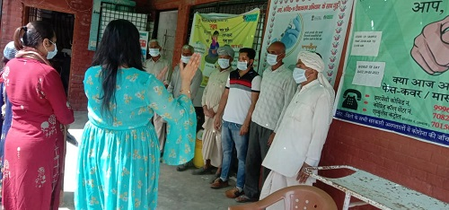

New Delhi, July 9 (IANS) Verbal autopsy is a scientific tool that can significantly aid India in the fight against tuberculosis, as it helps identify the deep reasons for mortality caused by the world’s deadliest infection, said Dr Kavita Vasudevan from Indira Gandhi Medical College and Research Institute (IGMC&RI) in Puducherry.
Speaking to IANS, Vasudevan, from the Community Medicine Department at the Medical College explained how a verbal autopsy model can help identify TB treatment delay patterns, and reasons for TB deaths and improve the referral process.
“A comprehensive approach is essential to effectively tackle TB, which includes the provision of quality TB care through access to quality diagnostics, effective drugs for therapy, prevention strategies, and identifying the underlying causes of mortality associated with the disease. Identifying the reasons for TB mortality can provide critical insights into the factors leading to these deaths,” the doctor said.
What is a verbal autopsy?
A verbal autopsy is an interview-based process where close relatives or caregivers of the deceased are asked questions about the circumstances and factors leading to death.
“This technique involves mixing both quantitative and qualitative methods to arrive at factors that lead to mortality in TB patients. For the quantitative method, clinical records of TB deaths are being reviewed, while for the qualitative component, stakeholder interviews are being with National TB Elimination Programme (NTEP) staff as well as the kin of the deceased patients,” Vasudevan explained.
It is especially relevant where the factors leading to deaths cannot be clearly determined from medical records.
For example, close relatives or caregivers of the deceased are asked about the deceased’s symptoms, treatment history, hospital admission time, treatment received, and the circumstances at the time of death. This information is collected in a structured format, after which doctors assess the probable cause of death.
“Verbal autopsy provides insights into the patient as well as health system delays, social or financial challenges faced during the illness, perceptions of healthcare services, and barriers to accessing timely diagnosis and treatment,” Vasudevan said.
The model is also a part of the government’s Sample Registration System since 2001 and has been providing excellent cause-of-death data.
Further, to strengthen the national mortality surveillance system in India, the All India Institute of Medical Sciences (AIIMS), New Delhi, established the “Mortality in India Established through Verbal Autopsy” (MINErVA) platform with state-level partners across India in 2017.
The National Tuberculosis Elimination Programme (NTEP) mandates an in-depth verbal autopsy of deaths among TB patients to understand the cause of death and use this knowledge to make necessary adjustments to facilitate the programme and optimise service delivery mechanisms for preventing avoidable deaths.
“Tuberculosis is one of the top ten causes of death worldwide and the second leading cause of death from a single infectious agent after coronavirus disease, surpassing HIV. India’s TB burden remains a major public health challenge. As per recent estimates, number of deaths due to TB in India was 23 per lakh population,” said Vasudevan.
One of the milestones, under the National Strategic Plan and WHO End TB Strategy, is to reduce global TB deaths by 90 per cent by 2025.
The World Health Organization (WHO) has also advised using verbal autopsies as an important tool in the fight against TB, to better understand early symptoms, symptom duration, treatment initiation and interruptions, and the diagnostic process.
Verbal autopsy in Puducherry
Vasudevan noted that using the scientific tool, IGMC doctors are investigating the causes behind 160 deaths due to TB (reported in the UT in 2024) and identifying both patient-related and health system-related factors.
“Preliminary analysis has revealed that the majority of the TB deaths occur within 7 days of being diagnosed with TB, implying that there is a delay in patients accessing the health facility and are reaching the hospital late,” Vasudevan said.
“A significant number of patients who died belong to the neighbouring districts of Tamil Nadu. These patients have come to health facilities in Puducherry for availing treatment and often give false addresses or addresses of their relatives in Puducherry,” she added.
The verbal autopsy will help find patterns of treatment delay, ascertain reasons behind TB deaths, and improve triage systems and referral mechanisms, said Vasudevan who is leading the project in Puducherry.
(Rachel V Thomas can be contacted at rachel.t@ians.in)
–IANS
rvt/







